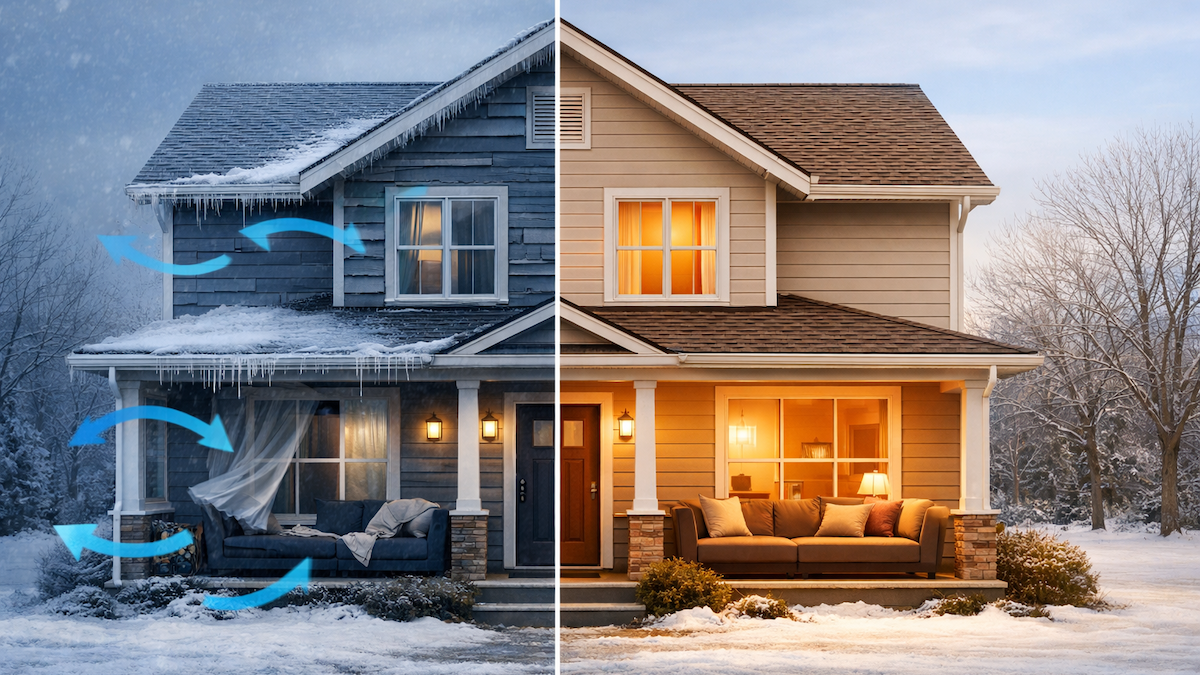What’s the Best Garage Insulation Material? A No-Nonsense Guide

Let’s be honest—most folks treat their garage like a junk drawer with a garage door. It stores tools, bikes, holiday decorations, maybe a fridge with exactly one beer in it. What it usually doesn’t have? Proper insulation. And that’s a problem.
If your garage is uninsulated, it’s probably one of the biggest energy leaks in your home. Heat escapes in winter, swelter creeps in during summer, and if there’s a room above it, you’re basically trying to heat a bedroom that sits on a giant ice cube. Not ideal.
The good news? Insulating your garage isn’t rocket science—but picking the right insulation material matters. Spray foam, fiberglass, cellulose, rigid board—each has pros, cons, and a sweet spot depending on whether your garage is heated, finished, detached, or just plain drafty.
In this post, we’ll break it all down so you can stop wasting energy and start treating your garage like part of your house (instead of a glorified shed). Let’s get into it.
Key Factors to Consider When Choosing Garage Insulation
Before we start ranking insulation like it’s a fantasy football draft, let’s cover the basics. The best insulation for your garage isn’t just about R-value—it’s about how your garage is built and what you actually use it for.
Here’s what you need to think about:
Heated vs. Unheated Garage
If your garage has a space heater, ductwork, or you’re trying to make it livable year-round (hello, home gym or workshop), you’ll want high R-value insulation with solid air sealing—think spray foam or dense-pack cellulose.
If it’s unheated and more of a storage space, you can get away with a simpler setup like fiberglass batts or rigid foam panels—just enough to take the edge off.
Attached vs. Detached
Attached garages matter a lot more for home comfort. Every cold draft or heat wave in the garage eventually makes its way inside.
Detached garages? Still worth insulating, especially if you’re working out there or storing anything sensitive, but you’ve got a little more leeway.
Climate Zone (Hint: Connecticut = Cold)
Around here, we deal with real winters—ice on the windshield, pipes that groan, the whole deal. That means higher R-values and moisture resistance are non-negotiable. Closed-cell spray foam or thick cellulose makes a big difference.
DIY vs. Pro Installation
Some materials—like fiberglass batts or foam board—are DIY-friendly if you’re handy and have the time.
Others—like spray foam or dense-pack cellulose—really shine when installed by a pro who knows how to air seal properly (and doesn’t mind getting covered in dust or foam in the process).
Moisture, Mold & Pests
Garages see more humidity swings, water drips, and pest visitors than other parts of the house. Choose an insulation material that won’t soak up moisture or turn into a mouse hotel. (Looking at you, cheap fiberglass.)
Top Garage Insulation Materials (Ranked by Performance and Budget)
Alright, now that you know what you’re working with, let’s break down the best garage insulation materials—what they cost, how well they work, and when to use each one.
Short on time? Here's a quick summary table of the best garage insulation materials:
This isn’t about what sounds good on a label. It’s about what actually works in real-world garages, especially if you’re here in New England where winter hits like a freight train and summer turns your garage into a sauna.
1. Blown-In Cellulose
Best for: retrofitting garage walls or ceilings with existing cavities
R-Value: ~R-3.5 to R-4 per inch
Cellulose is made from recycled paper, treated for fire and pest resistance, and it’s fantastic at filling awkward spaces—especially in older garages with gaps and funky framing. Dense-pack versions also block air flow surprisingly well.
Pros:
- Eco-friendly and cost-effective
- Great sound dampening
- Fills cavities better than batts
Cons:
- Can settle over time if not installed properly
- Needs proper air sealing to avoid moisture issues
- Blower equipment required
💡 A solid choice for budget-conscious homeowners who want performance.
2. Spray Foam Insulation
Best for: maximum air sealing, extreme temperatures, humid or drafty garages
R-Value: ~R-6.5 per inch (closed-cell)
Spray foam is the heavyweight champ of garage insulation. Closed-cell foam doesn’t just insulate—it seals air leaks, blocks moisture, and adds structural rigidity. If your garage is heated or attached to living space, this stuff earns its keep.
Pros:
- Highest R-value per inch
- Excellent air and moisture barrier
- Great for rim joists, ceilings, and walls
Cons:
- Most expensive option
- Professional installation required
- Overkill for detached garages you rarely use
💡 Use it if you want your garage to feel like part of your home—not a separate weather system.
3. Fiberglass Batts
Best for: quick DIY jobs, basic wall cavities
R-Value: ~R-3.2 to R-3.8 per inch
Old-school and still widely used. Fiberglass batts are available at every big-box store and can work fine—if installed correctly (and that’s a big if). They don’t seal air gaps, so pairing with caulking or foam is a must.
Pros:
- Low cost and widely available
- DIY-friendly
- Quick install
Cons:
- Poor air sealing on its own
- Loses effectiveness if compressed
- Attracts rodents if left exposed
💡 Not ideal for damp or unconditioned garages, but not bad if you’re in a pinch.
4. Rigid Foam Board
Best for: garage doors, concrete walls, ceiling panels
R-Value: ~R-4 to R-6.5 per inch
Rigid foam boards are a moisture-resistant solution that works great in garages with masonry or metal surfaces. They can be glued or screwed to walls and ceilings, or cut to fit into garage doors.
Pros:
- Excellent moisture resistance
- Easy to cut and install
- Great for unvented or humid garages
Cons:
- Requires sealing at joints
- Needs a thermal barrier (like drywall) in living-adjacent areas
- Brittle if not handled carefully
💡 A smart solution for insulating garage doors or foundation walls where you can’t use batts or spray foam.
5. Garage Door Insulation Kits
Best for: quick comfort upgrades
R-Value: ~R-4 to R-8 (varies by kit type)
These kits use reflective bubble wrap or foam panels that attach to the inside of your garage door. They won’t turn your garage into a sauna, but they’ll knock down the summer heat and reduce winter drafts.
Pros:
- Affordable and fast
- DIY install in an afternoon
- Helps reduce radiant heat gain
Cons:
- Limited R-value
- Doesn’t seal air leaks
- Mostly cosmetic if done poorly
💡 Great for a weekend project—just don’t expect miracles.
Which Garage Insulation Material Is Right for You?
There’s no one-size-fits-all answer here. The right insulation depends on how your garage is built, what you use it for, and what kind of headaches you’re trying to avoid.
Here’s a cheat sheet:
- Attached & unheated: Foam board or fiberglass batts
- Attached & heated or room above: Spray foam or dense-pack cellulose
- Detached workshop: Blown-in cellulose or fiberglass batts
- Moisture or pests: Closed-cell spray foam or rigid board
- Soundproofing or gym: Dense-pack cellulose or spray foam are great for soundproofing
Don’t just pick the cheapest material—pick the one that fits your garage.
DIY vs. Pro Garage Insulation: What’s Worth Tackling Yourself?
Some insulation jobs are dead simple. Others? They’ll have you wishing you’d just called someone with knee pads and a compressor.
Good DIY Options
- Fiberglass batts
- Rigid foam board
- Garage door kits
Great for open walls, tight budgets, and folks who aren’t afraid of a utility knife.
Call a Pro When:
- You want spray foam or dense-pack cellulose
- Your garage is finished or has hidden cavities
- You’ve got moisture, pests, or weird framing
A good installer brings proper tools, airtight sealing, and a job done in hours—not weekends.
Garage Insulation FAQs
What R-value do I need for garage insulation?
Garage insulation R-values depend on usage. For unheated garages, use R-13 to R-21 in walls. Heated or finished garages need R-19 to R-21 in walls, R-30 to R-38 in ceilings, and R-6 to R-10 on doors. Air sealing is essential to prevent heat loss through gaps.
Will insulating my garage lower energy bills?
Insulating your garage lowers energy bills by reducing heat transfer and easing the load on your HVAC system. Attached garages or those with rooms above benefit most. Insulation in the walls, ceiling, and shared door helps stabilize indoor temperatures and prevent energy waste.
Can I insulate my garage ceiling?
You can and should insulate your garage ceiling, especially if there’s a living space above. Ceiling insulation blocks heat loss, reduces cold floors, improves soundproofing, and boosts comfort. Spray foam or dense-pack cellulose is most effective, but fiberglass batts work with proper air sealing.
What’s the cheapest way to insulate a garage?
The cheapest way to insulate a garage is by using fiberglass batts in the walls and rigid foam board or a garage door insulation kit for the door. This DIY-friendly setup targets major heat loss areas. Avoid gaps and compression to maintain insulation performance.
Can I use the same insulation for my attic and garage?
You can use some of the same insulation for attics and garages, like fiberglass batts or blown-in cellulose, but garages face more moisture, pests, and temperature swings. Closed-cell spray foam or rigid foam board often works better in garages due to their durability and moisture resistance.
Final Thoughts: Don’t Skip the Garage
Most people don’t think of their garage as part of the house… until their bedroom floor feels like a freezer tray or their utility bill spikes every January. The truth is, your garage might be the single biggest weak spot in your home’s thermal armor.
Insulating it the right way—not just with whatever’s on sale—is one of the smartest upgrades you can make. Whether it’s foam board on the doors, batts in the walls, or full spray foam on the ceiling, your garage deserves better than drafty drywall and false promises.
Related Articles
Let's Work Together
Ready to transform your home into an energy-efficient haven? Schedule your free energy assessment today and experience the Nealon difference for yourself.



